ePostcard #119: Sea Turtle Magnetism (Part 5)
#1. Photo Credit: Satellite-tagged loggerhead photo courtesy of Argos System (argos-system.org).
Loggerhead sea turtles begin their lives by migrating alone across the Atlantic Ocean and back. Eventually, after more than two decades, the females return to nest on the beach where they hatched – or else, as it turns out, to a beach with a very similar magnetic field.
Many animals possess a sixth sense, which humans lack, that enables them to detect the Earth’s magnetic field. This sixth sense—magnetoreception—has been demonstrated in certain mammals, birds, reptiles, frogs and salamanders, fishes, insects, and even some bacteria. These animals all possess the ability to sense and respond to minute changes in the magnetic field, guiding their movements over spatial scales from several feet to hundreds of miles. Long-distance migrants, including monarch butterflies, yellowfin tuna, many birds, sockeye salmon and sea turtles are able to detect the direction, intensity and inclination of the magnetic field. An adult sea turtle’s life is a continuous series of migrations between feeding and breeding sites, and a single migration cycle may cover thousands of ocean miles and take several years to complete. This more complex version of magnetoreception provides sea turtles with navigational capabilities that include an onboard “global positioning system” (GPS-like waypoints) and a “map sense” that logs in their route. During their months or years spent traveling the open ocean—to our eye a seemingly featureless marine wilderness—sea turtles are able to rely on an extraordinary magnetoreception skillset honed over millions of years of evolution.
Scientists continue to explore the adaptations that enable sea turtles to know where they are in the world and how to navigate to a specific locality thousands of miles away. Most animals use the magnetic field differently than you would with a human-made compass, which merely aligns with the magnetic poles. Among the most fascinating aspects of sea turtle biology are the multiple sensory cues that enable breeding-age males and females to return to the natal area where they hatched with almost pinpoint accuracy after decades at sea. Researchers using satellite tracking devices have discovered that every stretch of coastline has its own unique “magnetic signature” and that breeding females rely primarily on geomagnetic imprinting and a suite of local cues (chemical or otherwise) to return to this same general area for mating and egg-laying. When the turtle hatchlings leave their nest this magnetic signature is geomagnetically “imprinted” in the sea turtle’s internal “homing compass.”
The mysterious mechanisms that enable magnetoreception are now the subject of sensory biology research projects around the world. Scientists are still in the early stages of identifying precisely what those are and how they work. Magnetoreception research focuses on two main biophysical mechanisms, a mechanical sensor involving crystals of magnetite and a chemical sensor involving the protein cryptochrome.
Magnetite is extremely sensitive to magnetic fields and has already been discovered in bird beaks and fish noses (salmon), as well as in the human brain. To date, however, the only proven magnetoreceptor magnetite sources are found in various phytoplankton and magnetotactic bacteria, which contain nanoparticles of magnetite and iron sulfide that align in parallel along Earth’s magnetic-field lines. Animal tissue is essentially transparent to magnetic fields, which means that magnetoreceptors, unlike most other sensory receptors, need not be located on an animal’s surface and might be anywhere in the body. As yet, no magnetoreceptive organ has been identified with certainty in any animal.
click images to enlarge
#2. Photo Credit: Loggerhead photo courtesy of the New England Aquarium.
After departing from their natal beaches as hatchlings and migrating across vast expanses of open ocean, loggerhead turtles return as adults to nest on the same stretch of coastline where they themselves hatched, a behavior known as natal homing. Natal homing in sea turtles appears to be accomplished largely through the mechanism of geomagnetic imprinting, in which turtles detect the magnetic field of their home area when young and use this information to return years later as adults.
A series of elegant experiments by neurobiologist Dr. Ken Lohmann and his colleagues at the University of North Carolina have shown that sea turtles can absolutely detect the Earth’s magnetic field, and they use that information to determine which way to swim. According to Lohmann, “A compass cannot explain how a sea turtle can migrate all the way around the ocean and return to the same specific stretch of beach where it started out. A compass sense is enough for an animal to figure out latitude, based on changes in the inclination of magnetic field lines (flat at the equator, plunging into the earth at the poles). But longitude requires detecting subtle variations in field strength from place to place—an extra map or signpost sense that magnetite could supply.” He goes on to suggest that some of their navigational ability must be inherited, not learned, because it occurs in hatchlings that have never been to sea.
In trying to understand the role of a chemical sensor in magnetoreception, I was once again amazed by the incredible complexity of how sea turtles have evolved over millions of years. Wander with me through a bit of biochemistry as we explore how these master mariners navigate their global ocean realm. The chemical sensor in this case—the cryptochrome protein complex—involves biochemical reactions at the molecular level that are influenced by the Earth’s magnetic field. Such reactions involve the “electrical excitement” of pairs of free radicals (uncharged molecules) and the best-known free radical-pair reactions begin with electron transfers induced by the absorption of radiant energy—sunlight.
Cryptochrome proteins occur in the retina of the human eye, but we don’t appear to use them for directional sensing. The blue light-sensitive, cryptochrome molecule identified as a potential chemical sensor in magnetoreception is quite different from that associated with vision, and is involved in the timing of circadian rhythms in plants and animals. The recent discovery of this cryptochrome molecule and a chromophore (an atom responsible for the color of a compound) that forms radical pairs when exposed to photons (light energy) in the eyes of magnetoreceptive birds during migration has inspired renewed interest in how cryptochromes might serve as chemical photoreceptors in sea turtles.
In early 2020, scientists in China, headed by Peking University’s Dr. Can Xie (see citation below) reported that iron-binding molecules (magnetite) and cryptochrome molecules might fit together as a nanoscale biocompass. By scouring the genomes of the fruit fly, the researchers had identified an inheritable photoreceptive gene–a protein molecule coded directly by a gene that could be passed on to an organism’s offspring. Narrowing their search to identifying iron-containing proteins led them to a magnetic receptor protein (MagR). that forms complexes with a light-sensitive cryptochrome. Using electron microscopy and computer modeling to figure out the protein’s structure, they discovered that MagR and cryptochrome proteins formed a cylinder, with an inside filling of 20 MagR molecules surrounded by 10 cryptochromes. The researchers were also able to show that these cryptochrome/MagR complexes can form in the cells of whales, pigeons and monarch butterflies.
Yes, the story behind sea turtle navigation is complicated and far from finished. Whether or not a cryptochrome protein complex forms the basis for magnetoreception in sea turtles remains to be proved. The stories behind the extraordinary animals that populate our world continue to unfold and we are the richer for each one of them! I provide two sea turtle examples—loggerhead and leatherback—to illustrate how magnetoreception works.
Research Citation: A magnetic protein biocompass. Qin, S., Yin, H., Yang, C. et al. Nature Materials v.15, pp. 217–226 [2016]; https://doi.org/10.1038/nmat4484
#3. Photo Credit: Juvenile loggerhead photo courtesy of WikiMedia Commons.
While loggerhead sea turtles in the Atlantic Ocean can be found from the Canadian Maritime Provinces to Argentina, they nest for the most part in temperate waters, and regularly north to the U.S. beaches of the Carolinas. In the winter, they migrate to the southern Atlantic to avoid cold stunning, which appears to be on the rise with climate change. After nest emergence, loggerhead hatchlings participate in an intense swimming frenzy over the period of several days in order to reach the Sargasso Sea. When the juveniles are about 6 inches long, they make a transatlantic journey from the eastern Atlantic to the western Atlantic. Their journey follows the Gulf Stream and the northern loop of the North Atlantic Oceanic Gyre. When they are almost 18 inches long and possibly 6-10 years of age, they make the return trip to the eastern Atlantic, remaining in shallow coastal waters for the rest of their lives.
#4. Illustration Credit: Courtesy of Dr. Peter Reid.
Earth’s magnetic field flows along a curved path from the South Magnetic Pole to the North Magnetic Pole. It is strongest at the poles and weakest at the magnetic equator. The inclination of Earth’s magnetic field varies, including running steeply out of the ground at the South Pole, parallel to the ground at the equator, or steeply into the ground at the North Pole.
Magnetoreception allows organisms to orient themselves and to navigate by detecting the direction, intensity, and inclination of a magnetic field. Animals use the Earth’s magnetic field to navigate in at least two ways: (1) Compass sense, by which organisms like bacteria, earthworms, and blind mole rats use magnetic-field information as an internal compass, working out their orientation and adjusting their path according to magnetic-field direction; (2) Signpost sense, by which organisms like butterflies, salmon, spiny lobsters, sea turtles, and homing pigeons—use the combination of magnetic polarity, intensity, and inclination to chart their paths. Some may even use unique combinations of local anomalies in the magnetic field as signposts in a mental map that gets them to their intended destination during migration and homing.
#’s 5-7. Photo Credits: Both juvenile loggerhead photos courtesy of NOAA and Flower Garden Banks National Marine Sanctuary. Satellite tag diagram courtesy of Argos Systems (argos-system.org).
#8. Map Credit: Courtesy of the UCF Marine Turtle Research Group
The North Atlantic gyre is a strong and consistent clockwise circulation of water in the Atlantic Ocean that is known as the Gulf Stream when it flows north along the east coast of the U.S. and is called the North Atlantic Current, Canary Current, and North Equatorial Current elsewhere. The Sargasso Sea is the name for the relatively still water at the center of the gyre. The Sargasso Sea is a sea with no shore. It sits in the North Atlantic gyre, bounded by currents moving clockwise: the Gulf Stream on the west, the North Atlantic Drift on the north, the Canary Current on the east and the North Equatorial Current and Antilles Current on the south. As the currents shift, the boundaries shift, but all the while corral sargassum, a nutrient-rich golden brown seaweed, into a huge floating mat. The biodiversity of the sea earned it the nickname “Golden Rainforest of the Ocean.” The same currents that corral the sargassum help steer the hatchling sea turtles into the Sargasso Sea, which is about 1.6 million square miles (about 4.1 million square kilometers), a vast nursery where they find ample food and protection from predators.
#9. Photo Credit: Courtesy of the UCF Marine Turtle Research Group, Dr. Kate Mansfield, photographer Jim Abernethy, and Projeto TAMAR.
Satellite tag data show that Florida’s hatchling loggerheads typically begin their transatlantic migration by swimming offshore and into the Gulf Stream. Most steered clear of the continental shelf, but there was substantial variation in their routes: a number of turtles left the North Atlantic Subtropical Gyre and entered the Sargasso Sea, a calm region in the middle of the circulating gyre where floating Sargassum collects. After several years of traveling through the North Atlantic Ocean they eventually return to the geographic area from which they originated.
Satellite tagging information for young loggerheads like this one suggests that the magnetic map of their migration route is more complicated than previously recognized. Although some fields along the North Atlantic subtropical gyre elicit robust orientation responses, other fields do not. Analyses of surface currents along the turtles’ migratory route suggest that the magnetic navigation responses of turtles are intimately tied to their oceanic ecology. Directed swimming appears to steer turtles into favorable regions of the gyre, in part by helping them leave or avoid areas that pose risks to completing their transoceanic migration.
According to Dr. Kate Mansfield, “Loggerhead turtles have an innate magnetic sense and a magnetic map. So, our turtles were ‘hard-wired’ to navigate around the Atlantic Ocean.” South Atlantic sea turtles do not passively ride prevailing currents as historically assumed, but instead actively swim and orient to keep themselves offshore. Depending on whether they hatch early, in the middle or late in the sea turtle hatching season, they travel in different and sometimes opposite directions, including into the Northern Hemisphere. This study was a collaboration between the University of Central Florida, the Brazilian sea turtle conservation group Projeto TAMAR, and the National Oceanic and Atmospheric Administration Fisheries. This study of turtles in the South Atlantic helps build knowledge about the sea turtles’ “lost years,” the time after they hatch and head to sea, and before they return closer to shore as large juveniles several years to as much as a decade later.
#10. Photo Credit: Courtesy of Greenpeace, Karen Bjorndal, director of the Archie Carr Center for Sea Turtle Research, and doctoral students Alexandra Gulick and Nerine ConstantIn.
In the Sargasso Sea, Alexandra Gulick and Nerine Constant are shown collecting data on water temperature in sargassum mats. The warmer temperatures offer a thermal advantage to juvenile sea turtles as they grow. The sargassum that shelters the turtles also traps tiny pieces of plastic. More than 60 percent of the hatchlings coming off Florida beaches have ingested plastics after as little as two or three weeks in the water. “When you swim through these mats, there’s a rain of small plastic pieces, even here, 200 miles off Bermuda and 1000 miles off the U.S. coast, in the middle of the ocean,” Constant says. “We were seeing plenty of plastic.”
#11. Photo Credit: Courtesy of Karen Parker and the Turtle Island Restoration Network. Loggerhead hatchlings in a floating island of seaweed, or sargassum.The loggerhead juveniles take advantage of this warm floating microclimate. They are cold-blooded animals so the heat boosts their metabolism and they grow faster.
The Sargasso Sea in the North Atlantic Ocean is surrounded by four ocean currents, which create a surface convergence zone. As the name suggests, these zones are places at the sea surface where water converges and things accumulate. One of the most important accumulations is of the brown alga (a seaweed) called pelagic Sargassum, a floating plant that is the basis for a diverse community of unique organisms. If you look closely at the sargassum in the photo above, you are able to see its leafy structure with many branches and circular balls. The balls are filled with oxygen, which helps the mat-like accumulation of sargassum float on the surface. The early life stages of at least four sea turtle species in the Gulf are closely tied to these surface convergence zones. In fact, the hatchlings swim for the lives to make it to these sargassum mats, which will serve as their floating habitat for the next few years, providing both protection and food. In addition to hatchling and juvenile sea turtles, many animal species call sargassum home, including fish, shrimp, crabs, and many more species.The young sea turtles, their bodies perfectly camouflaged, float within it, and feed on the animals that drift along on these sargassum rafts. Seabirds are often observed flying over the sargassum as they search for food.
To fully protect sea turtles it will be essential to understand how Sargassum drift habitat is distributed and what threatens it. Some threats are direct, like the harvest of Sargassum for livestock feed (a practice that has been stopped in U.S. waters). But most threats are indirect and come from the nature of the oceanography where the Sargassum floats—oceanic convergence zones. These zones collect many bad things, including plastics and petroleum. We are just beginning to understand how extensively these pollutants threaten turtles with entanglement and ingestion hazards.
#12. Photo Credit: Courtesy of Kara Dodge (NMFS Permit #1557-03), CC BY-NC-ND. Somehow this young leatherback knows the way.
Can you spot the patch of pink at the very top of the leatherback’s head in this photo? Recent research reported in the Journal of Experimental Marine Biology and Ecology, suggests that leatherback sea turtles may be able to sense seasonal changes in sunlight by means of an unpigmented spot on the crown of their head—known as the pink spot. Researchers examined the anatomical structures beneath the pink spot and found that the layers of bone and cartilage were remarkably thinner than in other areas of the skull. This thin region of the skull allows the passage of light to an area of the brain, called the pineal gland, that acts as biological clock, regulating night-day cycles and seasonal patterns of behavior. The researchers suggest that the lack of pigment in the crowning pink spot and thin skull region underlying it act as a “skylight,” allowing the turtles to sense the subtle changes in sunlight that accompany changing seasons, signaling them to return south when autumn approaches.
#13. Photo Credit: Courtesy of Kara Dodge (NMFS Permit #1557-03), CC BY-NC-ND.
There is no doubt that adult and juvenile leatherback turtles are capable of remarkable compass orientation in the seemingly featureless expanse of the Sargasso Sea. Scientists from the Large Pelagics Research Center collaborate with commercial fishermen to find and tag leatherback turtles at sea. In this photo, Captain Mark Leach checks out a 800-pound male leatherback turtle with a GPS-linked satellite tag on its back.
The largest, fastest and deepest-diving species of sea turtle is the leatherback. They travel thousands of miles between tropical and temperate breeding/over-wintering waters where they gorge on seasonally abundant gelatinous prey, Leatherbacks can grow to over a thousand pounds on a diet of watery jellyfish. They are the most widely distributed marine reptile on our planet and have been seen in the frigid waters off Argentina, southern Chile, and Tasmania and are not uncommon in the subarctic northern latitudes off Alaska, Nova Scotia, and the North Sea. Adults migrate periodically from these temperate foraging habitats to tropical breeding grounds, and a growing body of scientific research is yielding information on the migratory routes and geographic links between these areas. In the Pacific, where leatherback populations continue to decline, we urgently need to understand where these creatures spend their lives at sea in order to mitigate human-induced threats.
To understand the behavior and migratory patterns of these enigmatic turtles, the researchers set out to locate and tag leatherbacks in their northern foraging grounds in the northwest Atlantic. The productive waters off the coast of Massachusetts’ Cape Cod attract a rich diversity of marine life, including the jellyfish-loving leatherback turtle. Working with a skilled team of professionals – including commercial fishermen, a spotter pilot, veterinarians and field biologists—the researchers placed satellite tags on 20 leatherback sea turtles (adult male, adult female and subadults) over a 3-year period. The researchers analyzed the satellite-derived tracks of these leatherbacks during their open-ocean movements within the North Atlantic subtropical gyre. To determine the turtles’ true headings, the researchers corrected the reconstructed tracks for current drift and found negligible differences between current-corrected and observed tracks within the gyre.
Individual leatherback headings were remarkably consistent throughout the subtropical gyre, with turtles significantly oriented to the south-southeast. Adult leatherbacks of both sexes maintained similar mean headings and showed greater orientation precision overall. The consistent headings maintained by adult and subadult leatherbacks within the gyre suggest use of a common compass sense. Leatherbacks migrating through the subtropical gyre may orient to some aspect of the earth’s geomagnetic field and/or the position of the sun on the horizon. They could also have a time-compensated sun compass, similar to what has been proposed for loggerhead turtles and exists in some birds, butterflies and other animals. These animals appear orient themselves using the time of day from their circadian clocks and the position, or azimuth, of the sun. Solar and magnetic features are ubiquitous and vary in a predictable way from north to south in this region, making them potentially useful for compass orientation.
Citation information: Orientation behaviour of leatherback sea turtles within the North Atlantic subtropical gyre. Kara L. Dodge, Benjamin Galuardi and Molly E. Lutcavage in Proceedings of the Royal Society B (Biological Sciences). Published:07 April 2015; https://doi.org/10.1098/rspb.2014.3129
The Indian Ocean leatherback population nests in the Andaman and Nicobar Islands, south of the Bay of Bengal. At West Bay, on the western side of Little Andaman Island, this female leatherback turtle emerged from the water at 4 am and ended up staying on the beach well past dawn. Leatherback turtles like wide, gently sloping beaches where the approach isn’t too rocky. They make their nests above the high tide line where the soft, dry sand meets the first line of ipomea plants. This female was tagged after she started laying her eggs, which is the brief period of time when she focuses on nothing but the task at hand.
#16. Photo Credit: Courtesy of SEE Turtles.org.
These student conservation volunteers are collecting data on this nesting leatherback sea turtle at Costa Rica’s Tortuguero National Park. Scientists are now studying sea turtle DNA “fingerprints” (obtained from egg shells and blood samples) to gather clues about their life history, mating strategies, and family groups. “Hidden in a hatchling’s DNA is its entire family history, including who its mother is, who its father is, and to what nesting population it belongs,” says NOAA scientist Peter Dutton, who studies the DNA of endangered leatherback sea turtles. “By applying DNA fingerprinting, we can answer many elusive questions about sea turtle mating and reproduction patterns.”
Sea turtle generations span several decades, so individual species populations include turtles of many sizes and ages. Determining the population size of any turtle species is challenging because we humans catch only fleeting glances of sea turtles in the ocean, and that population estimates are based on egg-laying adult females and their offspring. A promising new technique, called genetic tagging, takes advantage of the DNA “footprint” that each nesting female leaves behind in the eggshells from which her hatchlings emerge. By exploiting the nuclear genomic variation between turtles, the researchers are able to identify unique genetic fingerprints for each individual female and to identify the nests and hatchlings associated with that individual. The ability to fingerprint eggs opens up possibilities for tagging on geographical scales that would be logistically impossible with standard tagging patrols.
click images to enlarge
To help build global awareness, we would appreciate it if you would share this post with your friends and colleagues. Please choose one of the options below which includes email and print! Thank you.

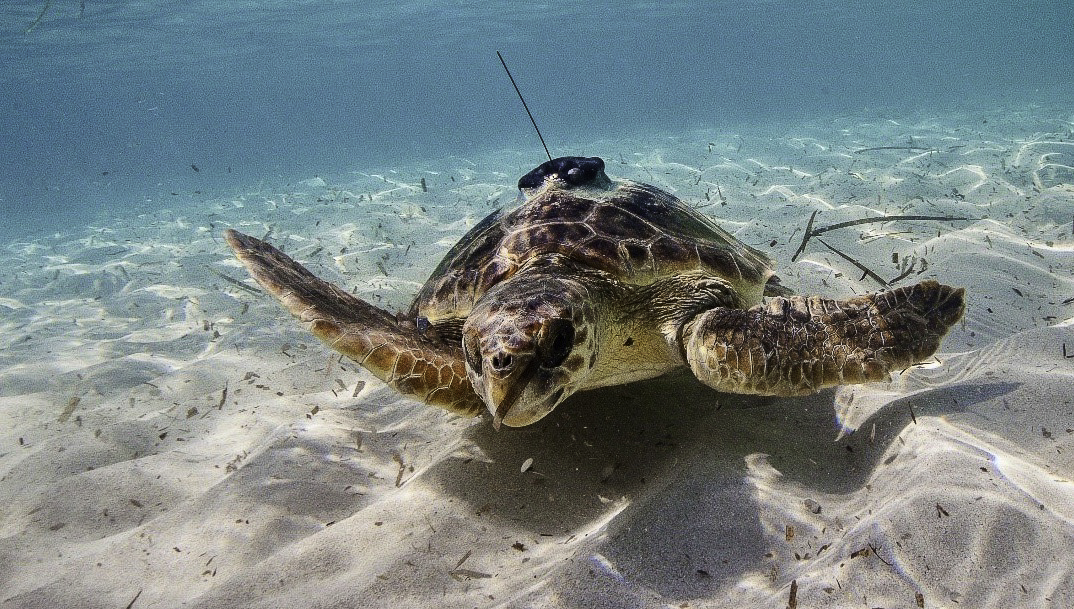

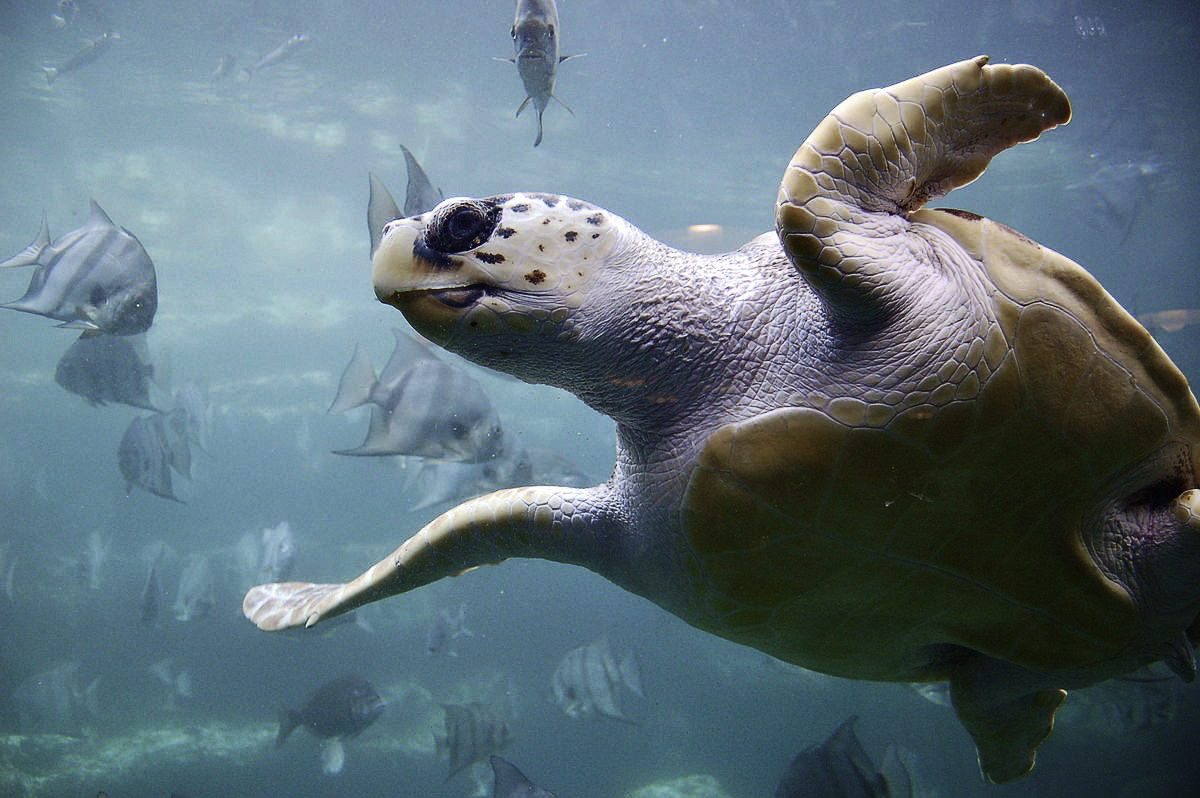
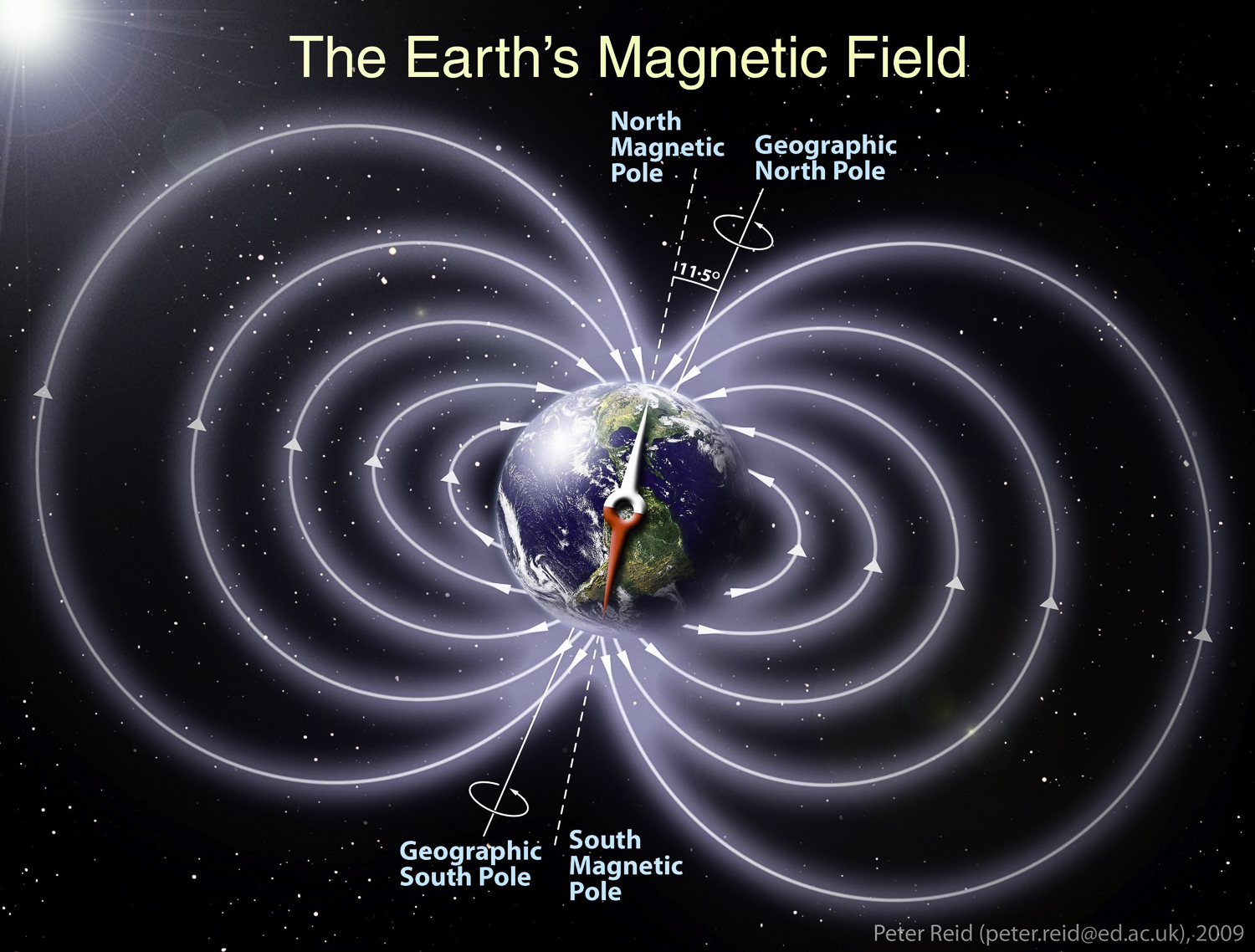
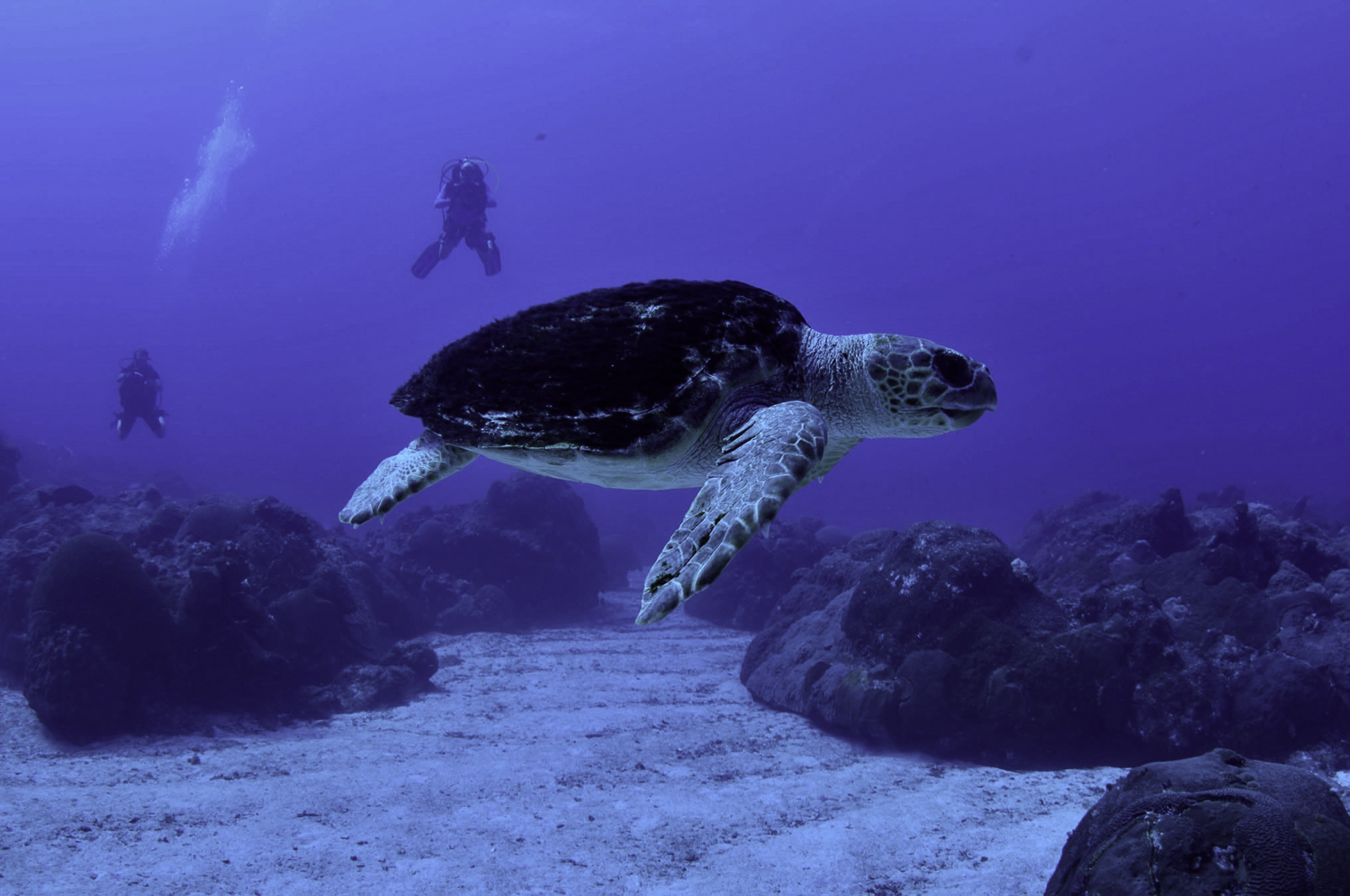
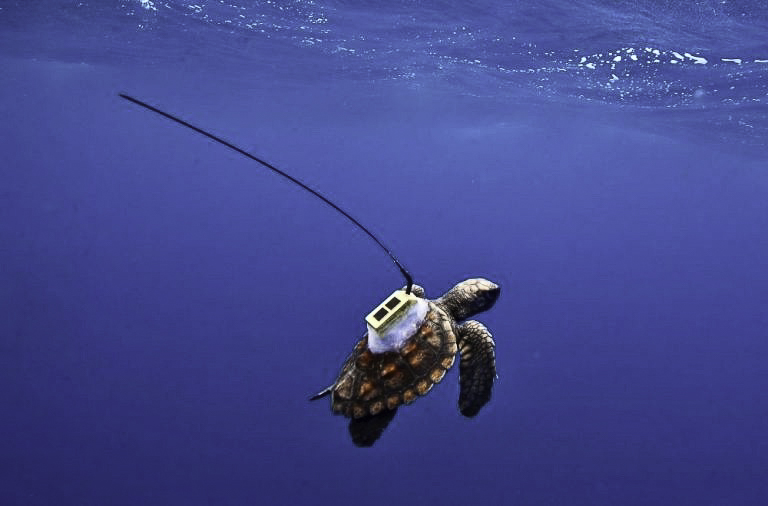
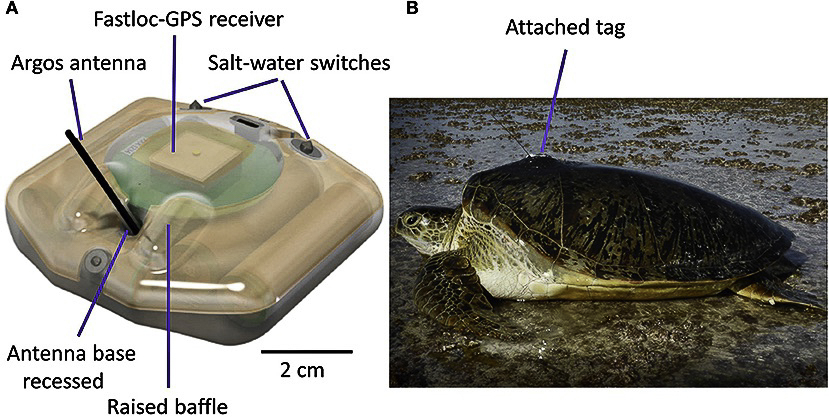

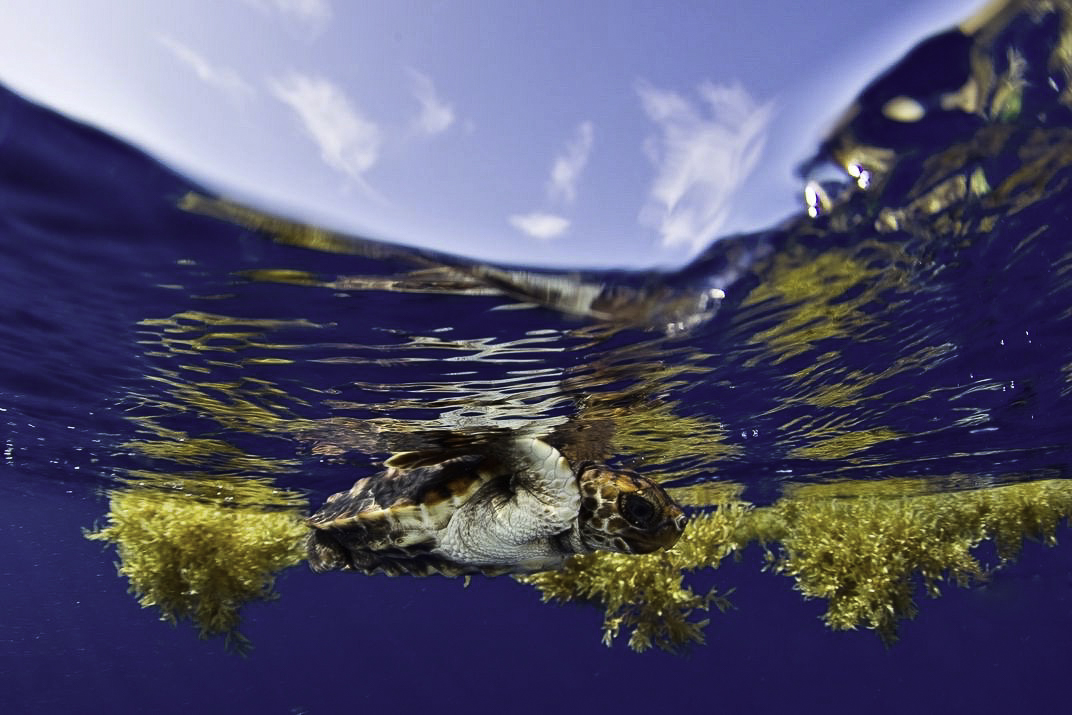
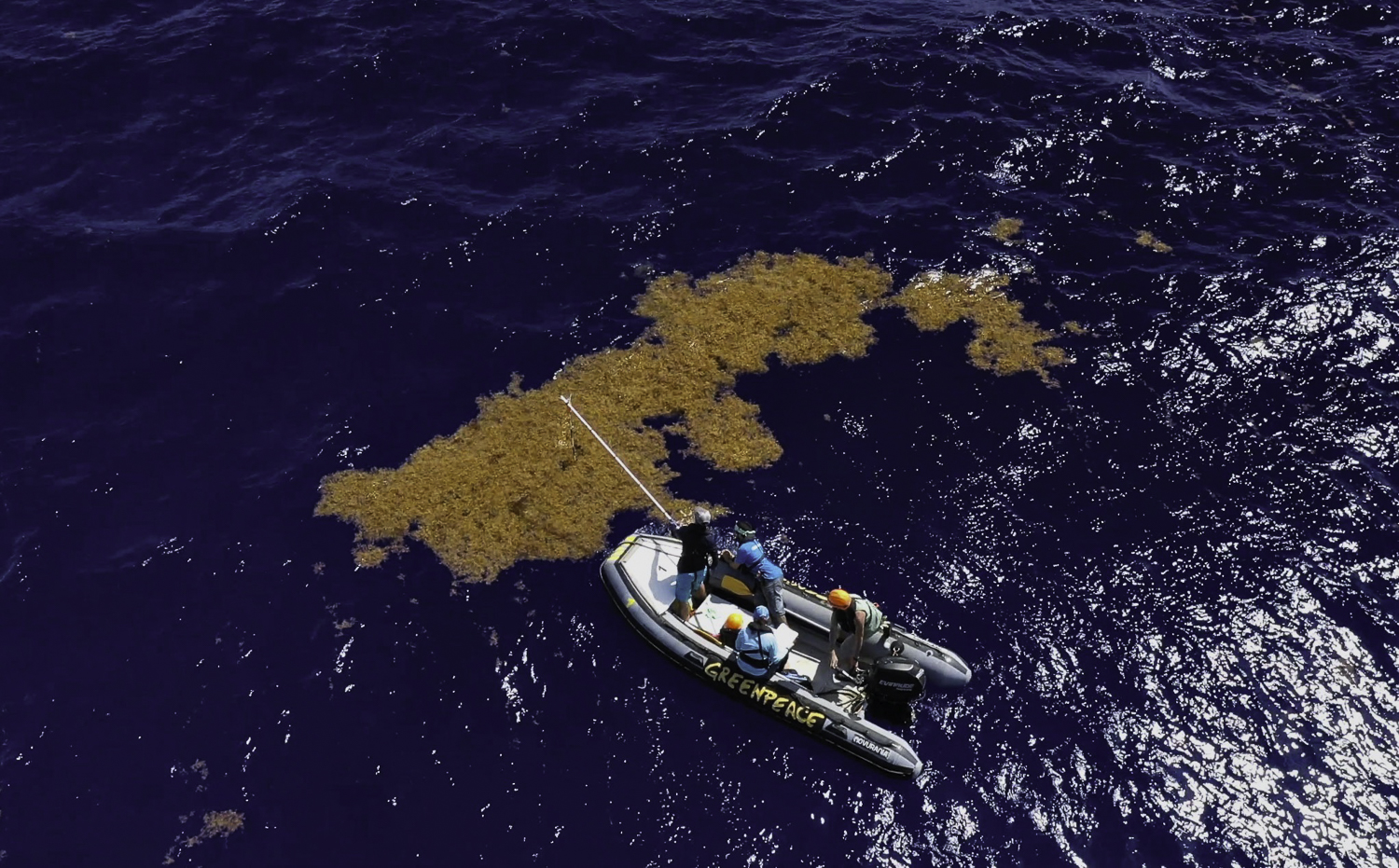
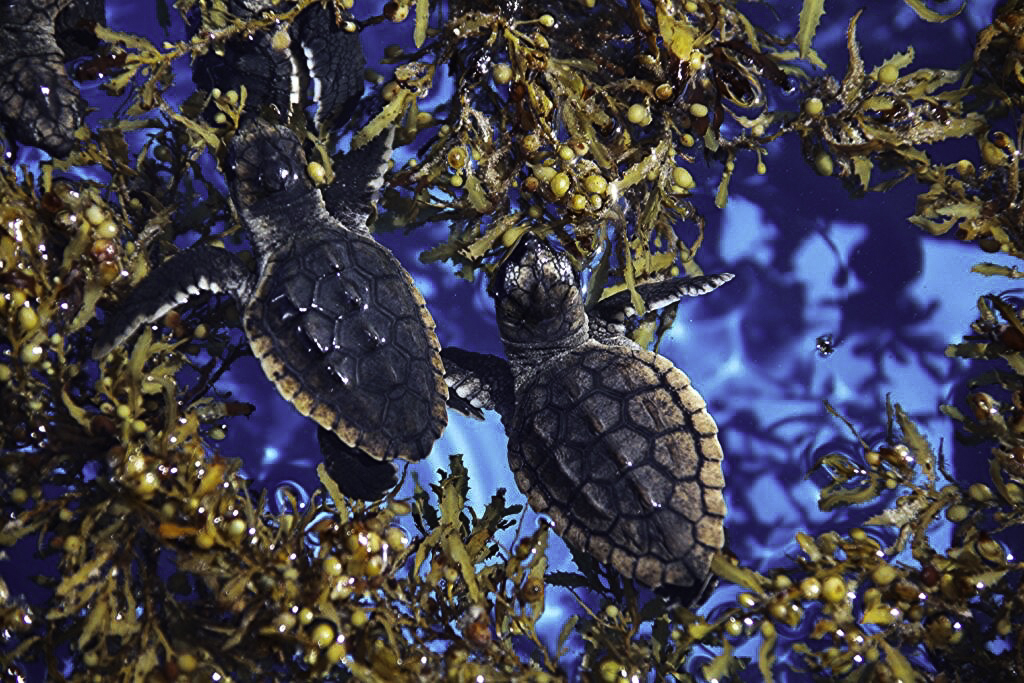
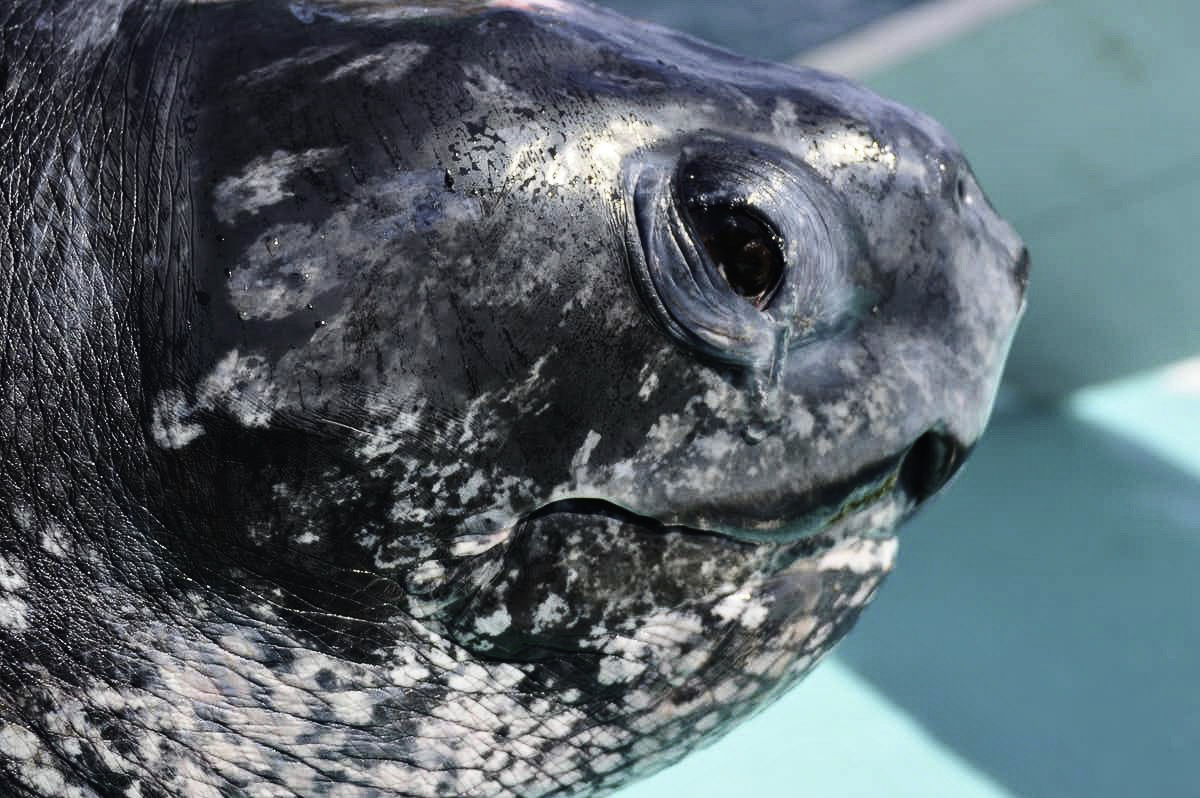


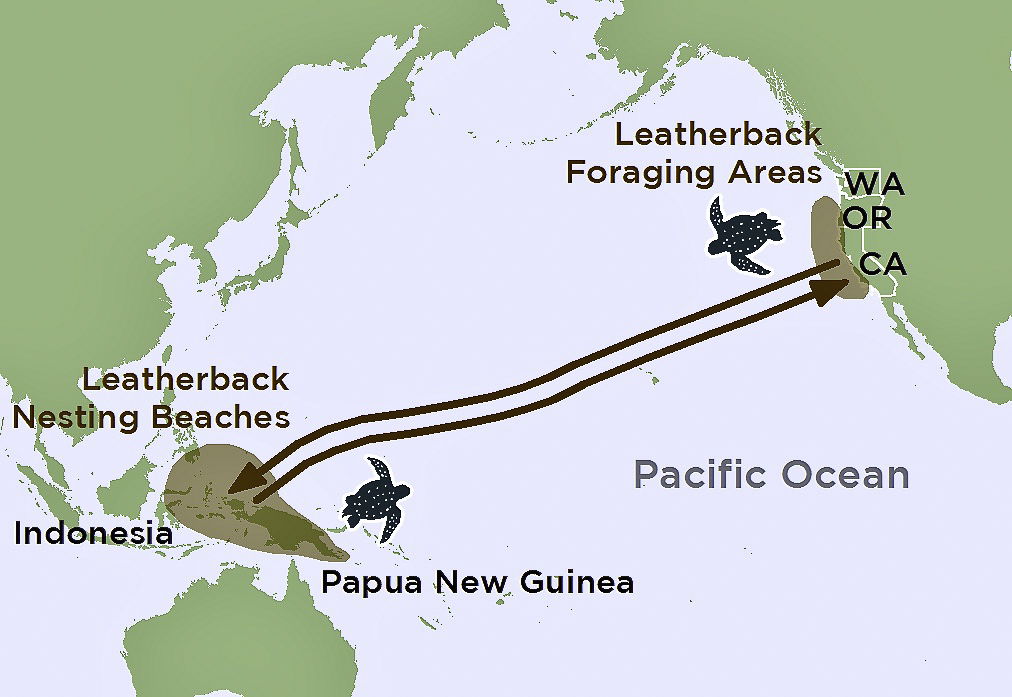
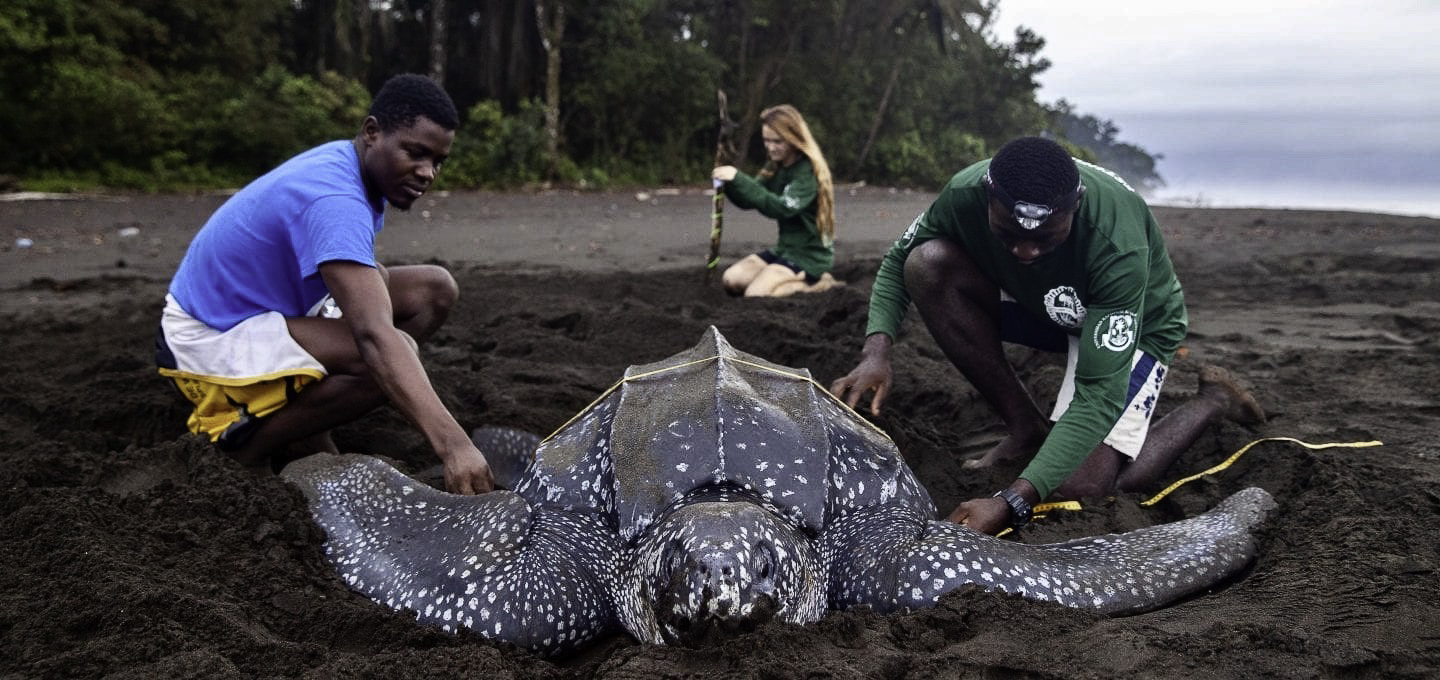
Wow! We have so much to learn from these astounding animals. Thank you for summarizing so much in one, highly readable account with perfect photos to carry us along.